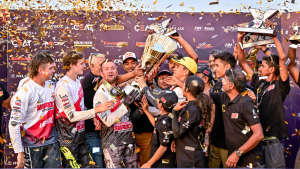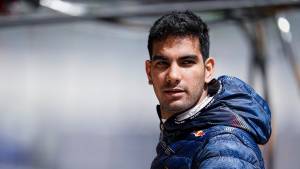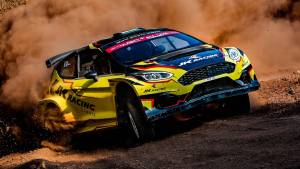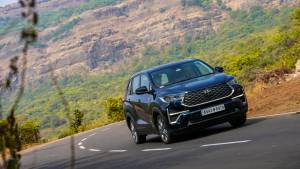Meet Harith Noah - the latest Indian to tackle the dreaded Dakar
Harith Noah was seeing stars.
It happened on the first stage of the 2020 Dakar. Noah, astride his Sherco TVS 450 RTR, had been riding down the stretch that headed from Jeddah to Al Wajh over 752km. What happened, he says, was something of a small navigational error on his part. If he'd scrolled a little further down the road book, he'd have seen the double caution marked on it. But between the dust, and the task of overtaking slower riders, he hadn't managed to do that. "I saw it just with my eyes, and not with my road book," he says of the hole that he hit. The next thing he knew, he'd crashed into the navigation tower and been flung over the handlebar of the motorcycle.
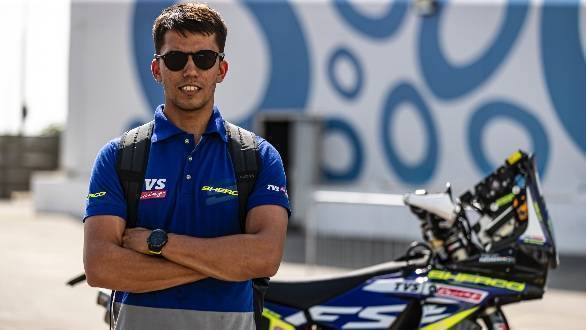
"The whole navigation system was crushed into the handlebar, and the handlebar didn't have any range of motion, so I couldn't turn it. And the clutch cable was broken, the fluid was out, so there was no clutch," Harith says. It's far from what he would have wanted on the very first stage of his very first Dakar. So he pushed the bike to the side, took a few deep breaths to compose himself, and then got his tools out and got to work, trying to remove the navigation tower so that he could free up the handlebar again. Though he kept at it, not a single screw turned, because the thread was gone. So he tried something else: "I decided I would just kick it with my boot, and just push it back, and that took, I don't know, 30 seconds. So I wasted a lot of time there, but anyway, I figured it out." So the navigation tower went back, and the handlebar was free, but he still had to try and make it to the end of the stage with no clutch. Which wasn't the least of his worries. At the back of his mind while riding, he was concerned about the extent of his injuries. His face had smashed right into the navigation tower, and his eye had taken the impact. "My eye was not very good. I wasn't sure if it was okay or if I had to stop, because I didn't want to lose an eye," he says. "So during a passage control I stopped and asked the doctor if it was okay. He said, 'As long as you can see, it's going to be okay.' I closed the other eye and I could see a little bit, so I continued." He ended the day 105th.
The next day Harith made up 40 places in a single stage. He had arrived!
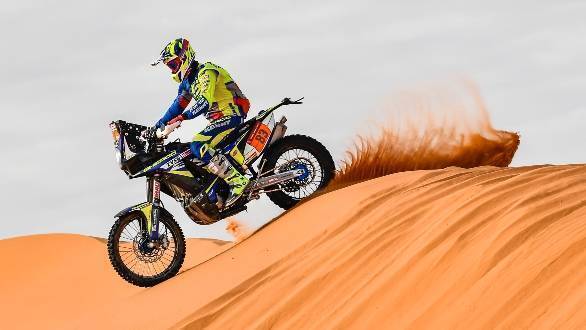
Stage 2 of the 2020 Dakar was set to head from Al Wajh to Neom, covering a distance of 393km. For Harith, there was some amount of uncertainty and concern the night before. He'd only be able to set off on the stage when the doctors looked at his eye in the morning, and gave him the all-clear. Fortunately for him, he did get the go ahead, but the situation, once in the saddle, was far from ideal. His Stage 1 finishing position meant that he started even further down the order, which meant he had to deal with dust, slower riders and quads ahead of him. Then there was the fact that his left eye was swollen to the point of being closed most of the stage. All factors that meant he couldn't really push hard on Stage 2.
"I would say after Stage 1, I took it easy," Harith says, adding that he rode the entire Dakar at around 75 per cent of his speed. "I would not push my limits during the Dakar, or during any rally, because it's very dangerous. Especially during my first Dakar, because finishing was very important." Without "pushing" he made it to the end of the stage in 52nd position, which meant he moved to 65th overall, making up, like we've said already, 40 places. This, in what was only the second stage of his first-ever Dakar. And he did it with a somewhat bruised and battered body, and a busted eye. It was certainly very impressive. And it was quite a long way from how he started out, "racing in the paddy fields in Kerala".
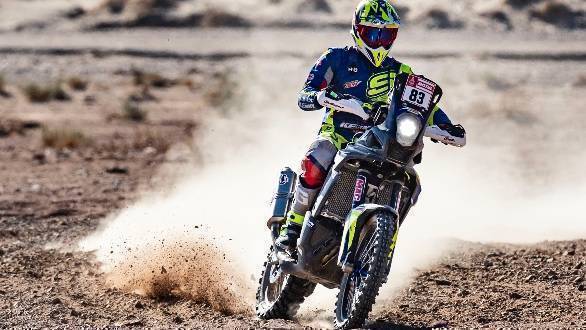
20 years before he was flying over the dunes in Saudi Arabia, Harith Noah was a kid watching cassette tapes of the Dakar that his Dad would bring back from business trips abroad. "I think at that time we didn't have a TV at home, but I used to go to my grandma's house and watch the Paris-Dakar. I would watch it four-five times that year, before I got the new cassette the next year," he laughs. Ten years later, at the age of 16, Harith competed in his first race, astride a motocross bike that he'd been given for his birthday. He finished last. A couple of years after that, having already established himself as a supercross rider to watch out for, he decided that he'd give the sport his all.
Words of wisdom from his father on a particularly hard Motocross weekend in Chandigarh aided this decision. He remembers how he went from leading the first Moto, to ending third, partly because he was riding with a less-than-ideal knee pad, since he'd forgotten to pack his knee brace. "Then after the first Moto my Dad said, 'If you want to take this up seriously then you have to push a little more'. I remember that incident as a little bit of a kick in the butt. After that came Moto2 I actually won it. And then I started getting serious," he says. Over the next couple of years he was impressive enough that a TVS contract came his way. Eventually he found himself switching from Motocross and Supercross to rally-raids, competing in the 2018 Morocco Rally, and 2019 Baja Aragon where he finished seventh.
Even at this point, though, Harith says he had his heart set on supercross primarily "because it was more fun". But being a part of the Dakar, experiencing the event for what it truly is, riding over dune after dune, crossing hurdle after hurdle, has changed his mind. "After doing the Dakar, experiencing how it was those two weeks, I completely fell in love with it. And I am 110 per cent sure that this is what I want to do. At least until I stop racing," he declares.
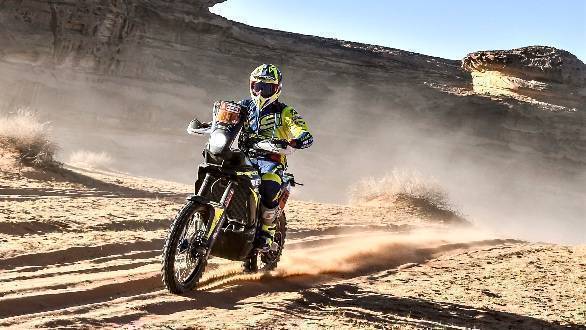
Imagine then, his disappointment on the third stage of Dakar 2020, when he wasn't able to take the start, due to a technical issue on his motorcycle. "Yeah, it was a difficult situation, it was a little hard to accept that it was actually the truth and I was not going to start," he says. But he took things in his stride. "I knew this was how it was almost the same way I thought about the crash, after the crash. It is the way it is, and there's nothing I can change. I can only try to look ahead, and work from there," is the philosophy that he adopted. He adds that it wasn't all bad, given that his injured eye benefitted from that unexpected day of rest. Then came the silver lining he was able to restart the event under the "Dakar Experience" category, which meant while he was no longer eligible for an overall position, he was still able to ride each day and be part of stage classifications. It allowed him to demonstrate just what he was capable of. On the fourth stage 672km between Neom and Al Ula Harith finished 47th. On the fifth stage that went from Al Ula to Ha'il, over 564km, he managed to end 37th overall. The youngest-ever Indian to compete at the Dakar was rapidly making an impression.
But, if there ever was the need for proof of the phenomenon 'what goes up must come down', the Dakar is it. Right when Harith had managed to get himself in good starting positions, avoiding the hassle of lining up at the very back of the pack and dealing with dust, things came undone. On the sixth stage of the rally, after having enjoyed starting 37th, Harith had ridden 20km into the stage when he found his teammate Johnny Aubert stopped on the side of the road with a broken throttle cable on his RTR 450. The teammates decided to ride to the next passage control together, where, given that Aubert was still in contention for an overall Dakar position while Harith was not, they swapped throttle cables. It was a complicated process that took a full two hours. And while Aubert rode off, it was Harith who was now left standing by the side of the track, convinced that he couldn't continue. Then the fighter's spirit kicked in. He managed to use Aubert's broken throttle cable, securing it with a shoelace, and continued to ride. The fact that he had only 50 per cent throttle at that point made it very hard for him to climb the dunes. But he soldiered on. At the refuelling stop, around 170km in, he managed to fettle with the throttle cable some more, and got 90 per cent of the throttle back. He managed to make it to the end of the stage. The fact that he'd made it to the finish line impressed many people. Because it went beyond just a demonstration of his speed. Instead it was a demonstration of those qualities determination, resilience, tenacity, ingenuity, and the spirit of survival that are so required when the Dakar throws challenges one's way.
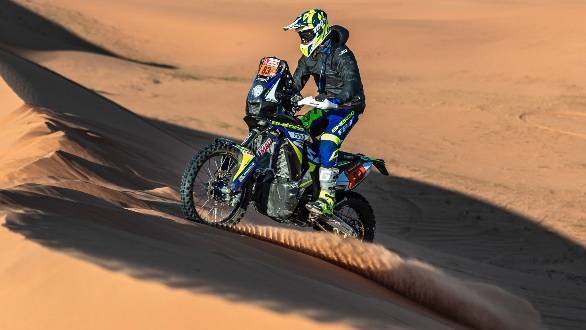
And it's exactly these challenges that Harith tells me he loved living through at the Dakar. Even if he made overcoming the obstacles thrown his way look easy, like it was all down to natural talent, he assures me that none of it has been. "I definitely work hard, so it's not just that I am like this. It's definitely difficult. Navigation is difficult, I think it's even difficult for the best of the best. It's definitely challenging, but I like the challenge," he says. "That's why I really like the Dakar, because it challenges you on the bike physically, mentally that whole experience of trying to be better, and trying to overcome all the problems you have. That experience is what I really like." He also jokes that having competed in the Dakar has helped him gain new perspective on life. "The Dakar made me also realise how good my life is when I'm not racing," he laughs.
And while the magnitude and intensity of those challenges that he so enjoyed during the 2020 Dakar seemed to keep increasing with each passing day, Harith was in no way cowed down. Instead, he seemed to have found his own rhythm, posting impressive stage times each day. He finished 33rd on Stage 7 of the rally, broke into the top 30 on the ninth stage when he finished 29th, and then ended Stage 10 in 32nd position overall. But the crowning glory of his first Dakar came right after.
Stage 11 of the 2020 Dakar comprised 744 arduous kilometres that ran between Shubaytah and Haradh. It's also the stage on which he crashed the most at least four or five times by his own estimation. Thirty seconds after he reached the first refuelling point, two other riders reached, one of whom was a fairly fast Italian. Which also meant that they set off from the refuelling point soon after Harith. "Then I had another crash, which was one of my worst crashes during that stage. I got some sand in my goggles. And the other two riders caught up. And then the whole stage till the finish from there, I kind of rode with the fast Italian, which was very nice, because he was a little faster, but not too fast. So I could ride his speed. That stage was I think one of the better ones. I think the results also show that," he says. He finished in 25th position.
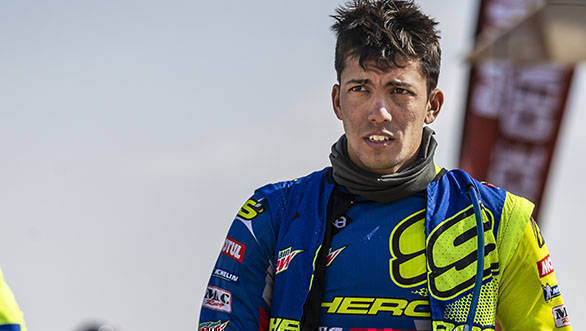
And while Harith tells me that he was happy with his performance on Stage 11 of the Dakar, he adds that the entire second week, his rally seemed like it came together. Even on the rally's tenth stage, he feels like he could have finished higher up than he did. "I was running really well, and I was riding with another guy, and we both got lost at one point. All the top riders got lost there. But he did find the way quicker than me, and I think he finished like top 20 or top 15. So that stage could have been better. But there are a lot of could haves. I just take it how it is," he says.
It's also these could haves, would haves, should haves that Harith says he tries to avoid. "I think the mind wanders that way. Like when you crash you try to find reasons why it happened, and you try to think, 'what if I could have done that or done this'. The mind wanders, but I try to not think about that. And I try to look forward from the position that I'm in. It's not easy, but it worked this time," he says.
This acceptance that the situation is what it is helped Harith stay sane and happy during certain parts of the Dakar. I ask if there were points in the rally during which he wondered why he was putting himself through all of this. "It pops into my mind, but more in a funny way. Like I find myself thinking 'I don't think many people will put themselves through these kinds of days'", he laughs. And he also admits that he'd have preferred not having to ride with a running nose, and that he could have done with some hot water instead of the cold showers at the end of each stage.
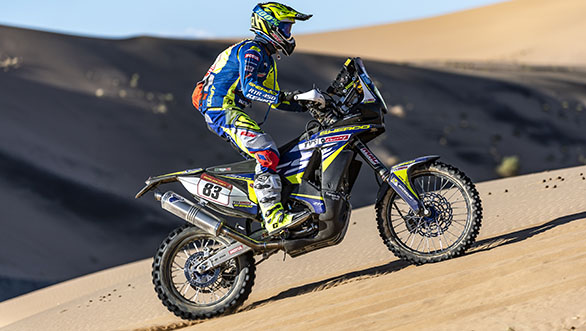
But jokes aside, Harith says that the Dakar, even though he was prepared for it, still overwhelmed him in terms of the sheer magnitude of the event. "It definitely surprised me at certain points physically I trained very hard, I was very fit. So that way I was kind of prepared. And also navigation-wise, as a team we trained a lot in Morocco, and a little in France. But you can't simulate the Dakar!" he says. And especially because it was his very first Dakar, there was a stark contrast between hearing an account of the rally from someone else, and actually living through the energy-sapping, bone-breaking rally himself. Since then he's already identified the areas in which he needs to improve before his next go. "Navigation, I think, you can keep learning there is no limit to that. Speed also. And some other changes I can make during training," he says.
Then there's the mental strength that's so crucial for every rally-raid rider. Harith, like most pro riders, trains with a mental coach, which he says helps him immensely. "We work on a few things, like how to stay concentrated throughout the stage. It's important to stay concentrated and to be mentally very strong," he says. And it's the really small lessons that he's found invaluable - like something as mundane as making a list of all the things he needs at a rally. "Sometimes in the past, during testing, training and sometimes at a few rallies, I forgot things that I needed to take with me. And I kept thinking about it, constantly. 'Why did I forget it, I should have taken it!' You know? It's a small thing that anybody could have told me, but my coach gave me the idea of writing down all the things I need before I go, like the scissors, the tape, the energy bars. I have it laminated, and I put it inside the van. So every time I leave, I check the list, I look at it and I think, 'Oh, I've got everything. And then I don't have to think even once, if I have it with me. It's a very small thing, but it's helped me a lot," he says.
Harith won't put a number or a finishing position to his motorsport goals and ambitions, however he does say that the "main objective at any race is for me to perform at my best. So I am kind of racing against myself. That is the main objective, and with that results will come." But what is his idea of doing his best? "Well, I'm actually almost never satisfied. So, it's never the best! Everytime, I want to do better. Like everytime I get on the bike and finish something, I think I could have changed this and that. But if you look at this Dakar, I would say my best was Stage 11."
Back when Harith was a privateer, who'd show up to motocross and supercross events with only his Dad and one mechanic, he remembers how fascinated he'd been when he saw the huge professional set-up of the factory teams. "The first time I went to a supercross championship, I saw the TVS tents and all the TVS bikes and I was like 'Oh my god, if I have this, my life is set. You know? This is all I want!" There's a palpable excitement in his voice as he recounts this. Now that he has this the might of a factory team behind him the goalposts have probably shifted. All Harith is willing to say is that he wants to "continue racing cross-country rallies and performing better. As long as I work really hard on performing better and training hard, the results will come. So, yeah, we will see. Time will tell," he declares. Indeed it will!
